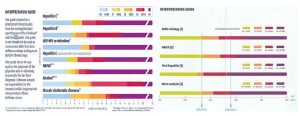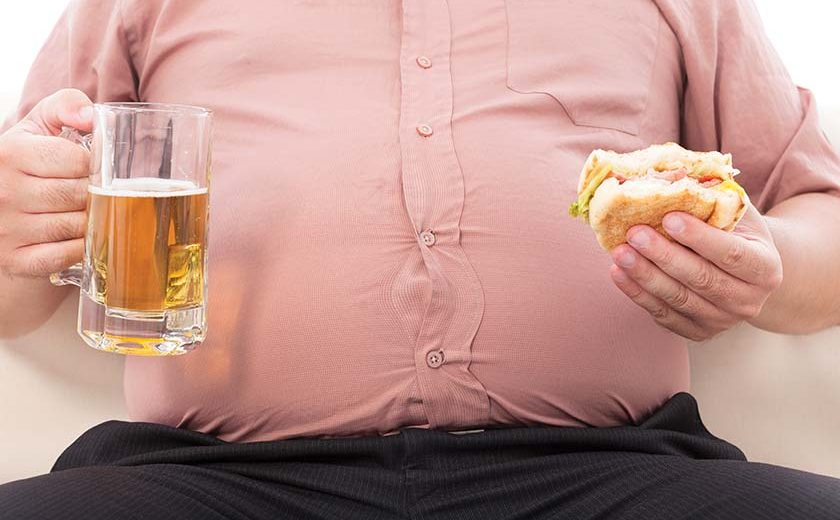“What’s so dangerous about fatty liver? After all it’s only fat, right,” you may hear some questioning. This article serves to answer this question.
Introduction
As society progresses, with improved sanitation and public health measures like mass vaccination, infectious diseases begin to take a backseat and non-communicable diseases come to the fore. Since Malaysia introduced the National Infant Vaccination Program for Hepatitis B on 1st of January 1989, the incidence of hepatitis B has dropped. Fatty Liver Disease is now gaining prominence and is beginning to replace hepatitis B as a major cause of liver cirrhosis and cancer.
What is fatty liver?
Consuming excessive alcohol beyond the capacity of the liver to cope results in Alcoholic Fatty Liver Disease. However teetotallers are not spared. There is another entity called Non-Alcoholic Fatty Liver Disease (NAFLD) which under the microscope also shows fatty ballooning of liver cells. NAFLD may progress to Non-Alcoholic Steato-Hepatitis (NASH) when inflammation creeps in. Fat is not just fat but it triggers inflammation. With chronic inflammation the liver becomes hardened and scarred. This is known as cirrhosis.
Hepatitis B and alcoholic hepatitis used to be the commonest causes of cirrhosis in our country. However there is a large group of cryptogenic cirrhotics, i.e. cirrhosis without an obvious cause. Increasingly cryptogenic cirrhosis has been attributed to hepatitis C and NASH.
What are the dangers of cirrhosis?
Once more that 70% of the liver function is compromised symptoms and signs of liver failure will surface. These include:
- Jaundice
- Fluid in the abdomen (ascites), lower limb and even private parts (oedema)
- Bleed and bruise easily
- Confusion, agitation, aggression and coma
What are the complications of cirrhosis?
- Vomiting of blood due to burst varices (distended veins) in the gullet and stomach
- Liver cancer
- Kidney failure
What are the causes of Non-Alcoholic Fatty Liver Disease (NAFLD)?
NAFLD may be part of the metabolic syndrome, a syndrome consisting of central obesity, impaired glucose tolerance which may lead to diabetes mellitus, dyslipidaemia and hypertension. At once it becomes obvious that lifestyle modification is the cornerstone to combat NAFLD.
Malaysia is the most obese nation in south-east Asian. Nearly 30% of Malaysians are overweight of which 7.4% are obese. Fifteen percent of Malaysians are diabetics. Fatty liver rate has been estimated to be about 30%. No doubt the sedentary lifestyle, lack of exercise and the tendency to overeat contribute greatly to this explosion in obesity. It is a no-brainer that to treat NAFLD one has to control diabetes, reduce serum lipids, exercise and consume healthy balanced diet.
Can we quantify fatty liver?
The gold standard to diagnosed fatty liver is of course doing a liver biopsy and looking for fatty changes under the microscope. But liver biopsy is an invasive investigative procedure which carries a complication rate of 5 in 1,000 (about ½ of the complications are related to bleeding) and a death rate of 5 in 10,000.1, 2 Imaging techniques like ultrasonography and computerised tomography (CT) while non-invasive is operator-dependent and is hence open to operator biases. However the last few years have seen a new kid on the block. FibroScan® is the game changer, setting new standards of care and replacing liver biopsy in some liver diseases.
How does FibroScan® work?
In a nutshell, FibroScan® shoots an ultrasound wave into the liver. Depending on the nature of the liver tissue, the composition of liver cells, fat cells, cells in the bile canaliculi and how the fibrous tissues are arranged, the sound wave will bounce back in a certain way. This rebounded sound wave will be picked up by the ultrasonography probe and analysed by the FibroScan® processor (See Picture 1 above). Two parameters are generated:
Liver stiffness score in kiloPascal (kPa) to quantify fibrosis.
Controlled Attenuation Parameter (CAPTM) in decibel per meter (dB/m) to quantify steatosis (fatty infiltration).
Is liver cirrhosis reversible?
Conventional teaching is that liver cirrhosis is irreversible. However before a liver becomes cirrhotic it passes through 4 stages of fibrosis (See Table 1 below). Fibrosis can reverse if the underlining cause of the liver inflammation is identified and adequately dealt with.
How to use FibroScan® to monitor fatty liver?
One of the many causes of liver inflammation is excessive adipose tissue or fat cells in the liver. FibroScan® can also be used to quantify fatty liver and the reading, in turn, can be used to motivate patients to lose weight, exercise and adopt a healthy balanced diet. Milk thistle and high dose vitamin E as anti-oxidant have also been used.

Just as there are 4 stages of liver fibrosis, there are also 4 stages of liver steatosis (See Table 2 above):
S0 = 0 to 4% steatosis
S1 = 5 to 33% steatosis
S2 = 34 to 66% steatosis
S3 = 67 to 100% steatosis
Concluding remarks:
Medical technology is advancing by leaps and bounds. The older, more invasive and dangerous procedures are now being replaced by more sophisticated, less invasive and safer procedures. What was accepted as the standard of care in the past may not be acceptable today. Because FibroScan® is safer it can be used more widely to help many more people avert the dangers of fatty liver. It sure is a good addition to the medical armamentarium.
References:
S Y Chuah, G A Moody, A C B Wicks, J F Mayberry. A nationwide survey of liver biopsy – Is there a need to increase resources, manpower and training?
Hepato-Gastroenterology 1994; 41: 4-8.
S. Y. Chuah. Liver Biopsy – Past, Present & Future. Singapore Medical Journal 1996; 37: 86-90.
 Dr Chuah Seong York
Dr Chuah Seong York
Consultant Gastroenterologist & Hepatologist
Pantai Hospital Ayer Keroh


